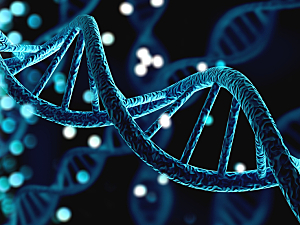Over the past 15 years, researchers have identified hundreds of regions in the human genome associated with heart attack risk and coronary artery disease (CAD). In an effort to streamline the analysis of these genetic variants, a team of researchers led by investigators from Brigham and Women’s Hospital, in collaboration with the Broad Institute of MIT and Harvard, and Stanford Medicine, developed mapping techniques to study how “deleting” individual genes associated with CAD impacted the expression of all the other genes in a cell.
“We decided we needed to have better maps showing how genetic variants affect gene expression and how genes affect biological function. If we could combine those two kinds of maps, we could make the bigger connection from variant to biological function,” said corresponding author Rajat Gupta, MD, of the Brigham’s Divisions of Genetics and Cardiovascular Medicine
The mapping technique is called the Variant-to-Gene-to-Program (V2G2P) approach. In collaboration with researchers at Stanford Medicine, the team used previous genome-wide association studies to match CAD loci to genes impacted by these genetic variants. Then, they used CRISPRi-Perturb-seq, a technology developed at the Broad Institute of MIT and Harvard, to “delete” thousands of CAD-associated genes, one at a time. In total, the researchers sequenced 215,000 endothelial cells to determine how 2,300 “deletions” influenced the expression of 20,000 other genes in each cell.
In a study published in Nature, the researchers applied these techniques to endothelial cells, which are increasingly understood to influence CAD risk. The study examines endothelial mechanisms unrelated to lipid metabolism (a known driver of CAD risk with effective therapies, like statins) to uncover other mechanisms driving CAD risk for which therapies may yet be developed.
The researchers found that 43 of 306 CAD-associated variants in endothelial cells were linked to genes in the cerebral cavernous malformations (CCM) signaling pathway. The study hypothesizes that smaller mutations in the genes involved in CCM may contribute to CAD risk by affecting vascular inflammation, thrombosis, and the structural integrity of the endothelium. The researchers highlighted a previously unrecognized role for the TLNRD1 gene in regulating the CCM pathway, theorizing that TLNRD1 may be involved in both CAD, a common disease, and CCM, a rare one.
Looking Towards the Future
Going forward, the researchers hope to study patients with endothelial CAD-associated variants to determine whether there are distinct treatment opportunities. They are also interested in determining whether further investigation into TLNRD1 can lead to better forms of genetic testing and risk stratification for CCM patients.
Beyond CAD and CCM, the researchers emphasize that the Variant-to-Gene-to-Program has the potential to be used in other relevant genetic disease studies.
